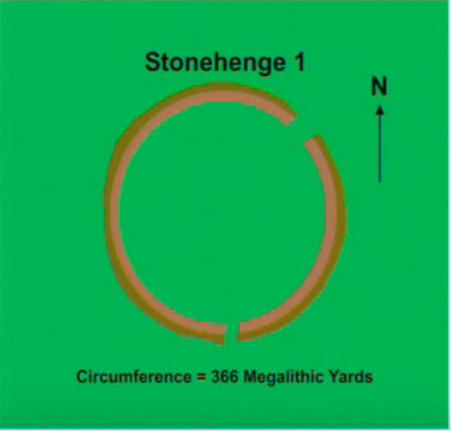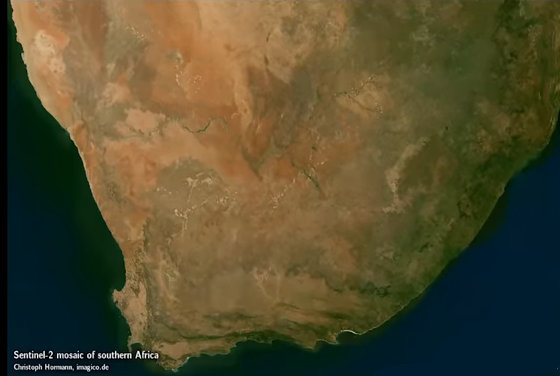So as I’m watching the video referenced in Metre, cubit, foot, megalithic yard, (https://www.youtube.com/watch?v=33dKFtCXEFA), and this image pops up on the screen:
Which is a view of how the first version of Stonehenge looked. And I say, “Hang on a mo, that looks familiar …. ” and indeed it is … that’s the same arc from the Nebra Sky disc:




